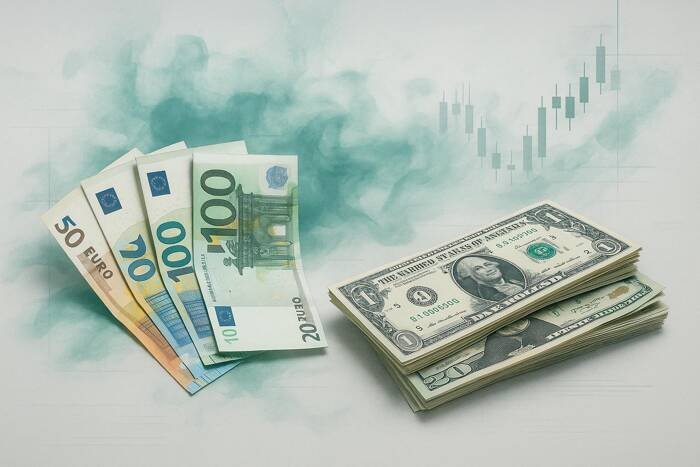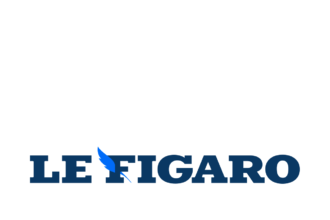- ECB Stays Put While Inflation Behaves
- Labor Market’s Tight, and That Keeps the ECB Calm
- Growth’s Not Flashy, But It’s Broadening
- Trade Surplus Blows Out as U.S. Demand Comes Back Online
- German Fiscal Stimulus: Real or Rhetoric?
- Inflation’s Cooling, But Core’s Still Sticky
- The Divergence Trade Is Still in Play
Euro Bulls Stay Confident as ECB Holds Fire and Data Delivers
The ECB isn’t moving, and traders aren’t flinching. Inflation’s calming, the labor market’s solid, growth is holding up better than feared, and now Germany’s teasing a fiscal firehose. Add in the Fed looking soft, and the euro’s got every reason to stay supported. The story here isn’t explosive — it’s consistent. And in this market, consistency pays.
Richmond Lee, CFA and Senior Market Analyst at PU Prime commented:
The combination of controlled disinflation, a robust labor market, broadening growth momentum, and a surging external surplus has created the most constructive EUR fundamental backdrop since 2021.
The ECB’s “higher for longer” stance is not hawkish stubbornness — it is justified confidence. Headline inflation is now comfortably inside the 1.5–2.5% symmetrical band, wage growth is decelerating (Q3 negotiated wages expected ~3.4–3.6%), and unit labor costs are peaking. Yet services CPI at 3.4% and the ECB staff’s 2027 inflation projection of 1.9% (with upside risks) mean Lagarde can credibly keep the deposit facility at 2.00% well into 2025 without credibility loss. Markets price only ~75 bps of cuts by end-2025 — a dovish enough to avoid tightening financial conditions further, but not so aggressive as to re-ignite inflation expectations.
The real game-changer is the re-emergence of the current-account engine. The September trade surplus of €19.4 bn (and €29.1 bn chemicals alone) reflects both volume and pricing power. The post-tariff rebound in U.S. exports is particularly important: America is once again absorbing high-value European goods at the exact moment the Fed is preparing to ease. That is textbook positive terms-of-trade shock for the euro.
Germany’s €500 bn “Zukunftsfinanzierungsgesetz” (future financing law (even if scaled down to €200–300 bn net new spending) would mark the end of the Schwarz-Null era. With debt-to-GDP still ~63% and Bund yields remarkably contained, the market is pre-positioning for a meaningful positive fiscal impulse in 2026–2027.Against a Federal Reserve that is visibly softening (November dot plot likely to show median 2025 funds rate ~3.75–4.00%), the transatlantic rate differential is set to widen again in the euro’s favor. EUR/USD fair value on short-rate differentials alone is already north of 1.15; add the external surplus and fiscal shift and 1.18–1.20 enters the conversation for H2 2025.
Risks remain — sticky services, China demand, energy shocks, political fragmentation — but the probability distribution is skewed positively. The euro is no longer cheap on real effective terms, but it is fundamentally justified. Long EUR vs USD, GBP, and low-yielders remains my highest-conviction macro trade into 2026.
ECB Stays Put While Inflation Behaves
Three meetings, no moves. The ECB’s sticking with its current policy mix — deposit rate at 2.00%, refinancing at 2.15% — and nobody’s expecting that to change soon. Inflation is cooling right on schedule, with 2025 projections at 2.1%. That’s close enough to target for Lagarde to stay patient.
But services inflation is still too hot at 3.4%, and that’s why cuts aren’t even on the table yet. The ECB’s message is clear: the inflation fight isn’t over, but it’s well under control. No need to get ahead of the data.
Labor Market’s Tight, and That Keeps the ECB Calm
Unemployment across the eurozone is at 6.2%, basically at the floor. The broader EU is even tighter at 5.8%. Traders don’t need a PhD to understand what that means — labor’s not breaking, and neither is the consumer.
Wages are still running warm at 3.9% year-over-year, down from 4.8%, but not enough to ring any alarm bells. The ECB likes what it’s seeing: steady jobs, slower wage growth, and some productivity gains helping absorb the cost pressure. It’s not perfect, but it’s manageable.
Bottom line: the labor market is doing just enough to justify the ECB’s steady hand.
Growth’s Not Flashy, But It’s Broadening
Q3 GDP came in at 0.2% q/q and 1.3% y/y. Decent numbers, and enough for the ECB to revise its full-year forecast from 0.9% to 1.2%. Not a boom, but a beat — and that’s what matters in this tape.
What’s getting traders’ attention is where the growth is coming from. France printed 0.5% in Q3, Spain hit 0.6%, and even Italy managed to post a gain. This isn’t just Germany dragging the region along anymore — the periphery is finally stepping up.
This kind of distribution makes the story stickier. When multiple economies start firing at once, you don’t fade it — you lean into it.
Trade Surplus Blows Out as U.S. Demand Comes Back Online
This is where the numbers really move. September’s trade surplus exploded to €19.4 billion — up from €1.9 billion just a month earlier. The reason? Exports bounced back hard, jumping 7.7% year-on-year to €256.6 billion.
The chemical sector led the charge, with its surplus surging from €17.9B to €29.1B. That’s not just cyclical volume — it’s margin-heavy, high-value exports leading the move.
The U.S. trade deal signed in September reversed the damage from April’s 15% tariff hit, which knocked August exports down 25%. The rebound was immediate. Monthly exports to the U.S. hit €46.8 billion, keeping it as the eurozone’s top partner. China’s holding steady at €45.5 billion — no fireworks, but no drop-off either.
Traders are watching this closely. A strong export engine backed by durable partners keeps capital flowing in and builds the case for staying long.
German Fiscal Stimulus: Real or Rhetoric?
Here’s the wild card. Germany is floating a €500 billion fiscal package — a number that would’ve been unthinkable just a few years ago. Whether they pull the trigger or not is anyone’s guess, but the fact that it’s even being discussed tells you something has shifted.
Berlin is talking about running deficits near 4% of GDP for the next decade. That’s a massive break from the balanced-budget mindset that’s dominated German policy for decades. With debt-to-GDP still under 65%, the market is giving them room to move — and bond yields aren’t flinching.
Even if half of that spending hits the real economy, it’s a game-changer for the region. Traders aren’t waiting for legislation — they’re already positioning for it.
Inflation’s Cooling, But Core’s Still Sticky
October inflation ticked down to 2.1%. That’s the headline number Lagarde wants. But under the hood, things are a little messier. Core inflation is stuck at 2.4%, and services are running hot at 3.4%. Those numbers aren’t falling fast enough to trigger a policy shift.
Energy’s helping — down 1% y/y — and food inflation eased to 2.5% from 3%. But the ECB knows those categories can turn on a dime. What they’re watching is the trend in wages, services, and underlying demand.
Their internal models show inflation dipping to 1.7% in 2026, then bouncing back to 1.9% in 2027. That 2027 rebound is what’s keeping policymakers cautious. Inflation may be tamed, but it’s not dead.
The Divergence Trade Is Still in Play
This is where things get interesting. The Fed is dealing with missing data, a softening labor market, and inflation that’s trending down. Rate cuts aren’t priced in aggressively yet, but they’re coming into view.
Meanwhile, the ECB has clean data, stable inflation, and solid employment. That means they can afford to sit tight. And every time the Fed leans dovish while the ECB holds firm, the interest rate differential moves in the euro’s favor.
Right now, the market is underpricing that divergence. Traders know it. Every ECB hold and every soft U.S. print strengthens the long-euro case. Capital flows follow rates — and the eurozone’s offering better stability, better policy clarity, and the potential for stimulus upside.



















